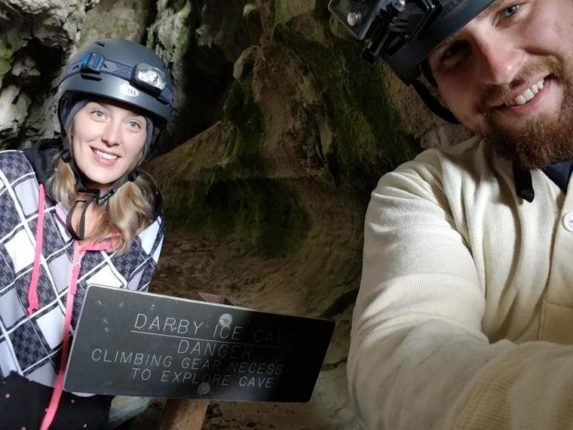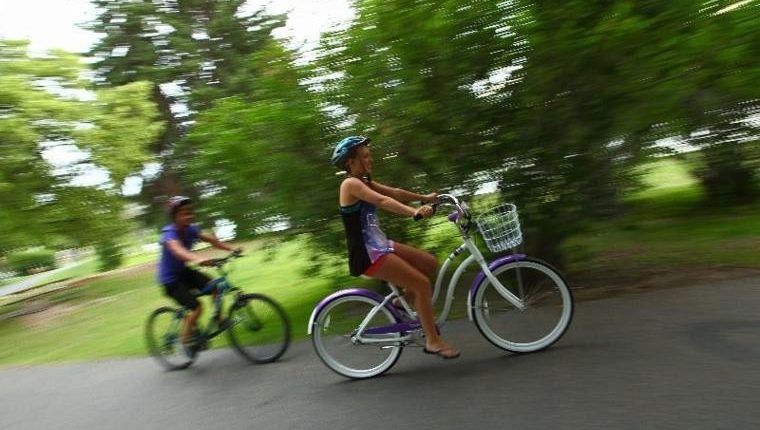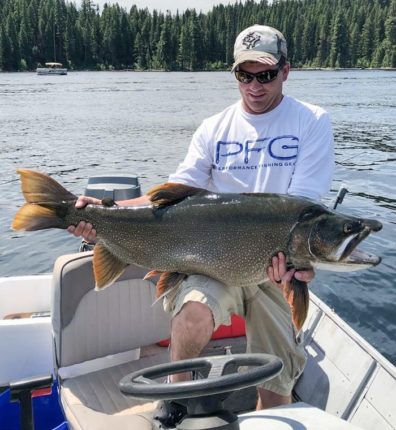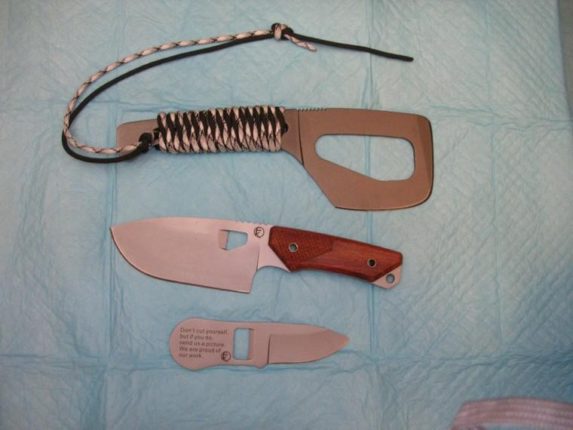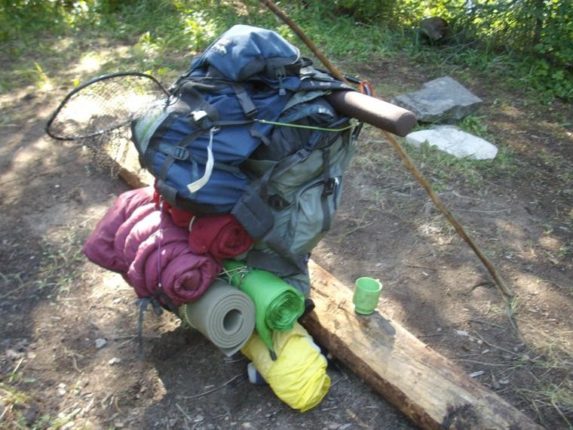After almost two days underground and no apparent way out, Spencer Christiansen resigned himself to the fact that he and his wife, Jessica, might die in the Darby Canyon Ice Cave.
“We knew we were in some deep trouble,” Christiansen said. “We didn’t think Search and Rescue would get to us in time.”
It was supposed to be a fun birthday weekend.
Christiansen turned 31 on Saturday, and the couple wanted to go on a grand adventure together.
“The best part was getting out of the cave and the Search and Rescue guys singing happy birthday to me,” Christiansen told the Jackson Hole News & Guide. “They were great.”
The Christiansens left their home in Idaho Falls early Saturday morning to explore the Darby Canyon Wind and Ice caves.
They had been researching and gearing up for a few weeks, he said.
“A coworker said he’d been to the Wind Cave,” Christiansen said. “I did as much research as possible. I went to a sporting goods store to look for a map. I called Teton County, and they didn’t have one. Apparently maps don’t exist.”
They left their baby with her grandmother and said if they weren’t back by midnight to call for help.
Grandma called for help at 7 a.m. Sunday.
The Christiansens had become trapped in a hole in the Darby Canyon Ice Cave above a waterfall.
A fixed rope was hanging from the ceiling and they climbed it, thinking that was the way out. But it was a dead end.
“When we figured out that wasn’t an exit, we thought for sure that we were going to run out of time and be dead,” Christiansen said. “I don’t think we would have lasted through the night.”
The two were cold, wet and exhausted. They decided to rest and hoped that rescuers were on their way.
“We ate all our food and burned everything we could possibly burn,” he said. “We burned a lot of different things like baseball caps, a backpack, gloves, knee brace and cards in my wallet.”
It hurt to inhale the smoke, and though the fire helped it didn’t provide much comfort.
“The ground in there is just mud and water,” he said. “It was impossible to get warm.”
Christiansen estimates they waited in that spot for eight hours, using various methods to try to warm up.
“We did some pushups, squats and jumping jacks,” he said.
His wife Jessica had suffered a 15-foot fall earlier, Christiansen said, and he had an old knee injury that was flaring up after they burned his knee brace.
But Christiansen said the mental toll was more challenging than the physical discomfort.
“There are not a lot of ways to describe what we went through,” he said. “We had to fight off the claustrophobia and panic.”
Finally, the two started to hear voices.
“I don’t even know how to describe it but when we heard them it was a huge adrenaline rush,” he said. “We were screaming because we knew somebody was down there.”
Several volunteers with Teton County Search and Rescue had been searching the cave for hours.
“They heard us yelling their names, which is how we located them,” volunteer Phillip Fox said.
Fox ascended the fixed rope and had to maneuver through a hole after some free climbing to reach the couple.
“We pulled up some warm clothes and water and heat packs,” Fox said, “and did a quick patient assessment to make sure they were coherent.”
The rescue crew got the Christiansens down and led them to the exit. Spencer Christiansen said it was full of water up to his neck, which is why he and his wife didn’t choose that route earlier.
“We thought for sure that wouldn’t be the way out,” he said.
Once the rescuers and the couple made the watery zigzag trek, they still had some hiking to do before getting back above ground.
“At that point you’re still only halfway through,” Fox said.
The rescuers got the couple into some dry clothes, did a reassment and climbed the rest of the way out of the cave.
“Once we got them warmed up a little bit, they were just ready to get out of there,” Fox said.
Greeted by other Search and Rescue personnel and some horses at the exit, Christiansen said it was surreal as they started to sing “Happy Birthday” to him.
“All this stuff brings tears to my eyes,” he said.
Christiansen was carried on horseback to the Darby Canyon trailhead and his wife walked to where his family and his wife’s family were waiting for them.
“It was pretty cool,” he said. “It was also embarrassing.”
The caves are mazelike and mostly unmapped, Teton County Search and Rescue Supervisor Jess King said, and they are constantly changing, making them dangerous even for the most experienced spelunkers.
“It’s a very technical and physically demanding endeavor,” King said. “The stream that flows through it can change where it flows, and rockfall from the ceiling happens every year, so you can get passages that open up that were never there before and some get closed off. It’s an active cave.”
Maps are hard to come by because rescuers worry published routes will make the caves seem more accessible to amateurs.
But information Christiansen found online was deceiving, he said. He and his wife thought they would be hiking only about 2 miles underground but ended up hiking closer to 8 miles just trying to find the right passageways.
“I hope the public can take that information and make educated decisions,” King said.
Search and Rescue personnel train in the cave each summer because the chances of rescues are high. This is the second mission there this summer.
It took 20 volunteers to successfully get the Christiansens to safety, King said, and more than 15 hours, with some rescuers underground for a large portion of that.
“We needed every single person who was there,” she said. “It’s a very demanding search. I’m just grateful we got to those people when we did.”
It was a birthday Christiansen won’t forget, he said.
“I would love to do it again,” he said. “If I could plan it for a whole month and could take enough water and food, now that I know. It was the most beautiful and amazing cave I’ve ever been through.”
